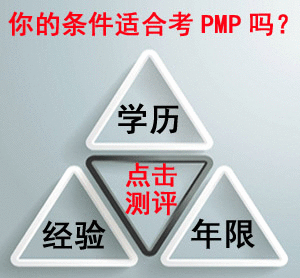1. You have received three estimates for your project activity. The optimistic estimate is 245 days, the pessimistic estimate is 269 days, and the most likely estimate is 257 days. This particular activity is critical to the project, and your project sponsor wants to know with 95 percent certainty how long it will take to complete this activity. Which of the following do you tell the project sponsor?
A. 265 days to 273 days
B. 253 days to 261 days
C. 261 days to 277 days
D. 249 days to 265 days
1. 你獲得項目活動的三種估算。最樂觀估算為245 天,最悲觀估算為269 天,最可能估算為257 天。這個活動對項目非常關鍵,你的項目發起人希望獲得關于活動歷時95%的確定結果,你將向發起人匯報:
A. 265至273天
B. 253至261天
C. 261至277天
D. 249至265天參考答案:D。平均值為257 天,標準差為4 天。計算方法參見《PMBOK 指南》第5 版第170-171 頁
2.According to learning curve theory, when many items are produced repetitively
A. Production equipment that requires less operator training lowers unit costs
B. Unit costs decrease as production rates increase
C. Unit costs decrease in a regular pattern as more units are produced
D. Costs of training increase as the level of automation increases
2. 根據學習曲線理論(learningcurve theory),當很多項是重復生產時:
A.需要較少操作員培訓的生產設備可以降低單位成本
B.隨著生產率的提高,單位成本減少
C.隨著生產更多的單位,單位成本有規律的降低
D.隨著自動化程度的增加,培訓成本也增加
參考答案:C。選項C 就是學習曲線的定義,學習曲線通俗的說法就是“熟能生巧”。
3.The flexibility of scheduling is by
A. Free float
B. Total float
C. ADM
D. Crashing
3. 進度安排的靈活性是由()決定的?
A. 自由時差
B. 總時差
C. 箭線圖法
D. 趕工
參考答案:B。參見《PMBOK 指南》第5 版第176-177 頁
4. You have received estimates for one of your project tasks as follows: The pessimistic estimate is 24 days, the optimistic estimate is 18 days, and the most likely estimate is 20 days. What is the standard deviation?
A. 1
B. 0.33
C. 0.67
D. 1.5
4. 你收到項目任務的估算如下,最悲觀24 天,最樂觀18 天,最可能20 天,一個標準差是多少?
A. 1
B. 0.33
C. 0.67
D. 1.5
參考答案:A。計算方法參見《PMBOK 指南》第5 版第170-171
5. Which of the following choices include all the tools and techniques to the process of estimate activity duration?
A. Analogous estimating, parametric estimating and three-point estimating
B. Expert judgment, analogous estimating, parametric estimating and three-point estimating
C. Expert judgment, analogous estimating, parametric estimating three-point estimating durations and reserve analysis
D. Expert judgment, analogous estimating, parametric estimating three-point estimating durations and bottom-up estimating
5. 估算活動持續時間的工具方法包括:
A. 類比估算、參數估算、三點估算
B. 專家判斷、類比估算、參數估算、三點估算
C. 專家判斷、類比估算、參數估算、三點估算和儲備分析
D. 專家判斷、類比估算、參數估算、三點估算和自下而上估算
參考答案:C。參見《PMBOK 指南》第5 版第166 頁
6.When is the project completion changed?
A. Compression of Critical Path
B .When the use of contingency reserve is not allowed
C. At the time of project resources are decreased
D. No float
6. 什么時候項目的完成會發生變動:
A.關鍵路徑壓縮時
B.當不允許使用應急儲備時
C.當減少項目資源的時候
D.沒有總時差的情況下
參考答案:A。關鍵路徑決定項目的最短工期,當關鍵路徑壓縮,項目的工期就會縮短
7.Resource leveling generally
A. Increases the total project cost.
B. Delays project completion.
C. Requires less resources
D. Requires more resources
7. 資源平衡通常:
A.增加整個項目成本
B.拖延項目的完成
C.需要較少的資源
D.需要更多的資源
參考答案:B。資源平衡的前提是資源不足,資源平衡會導致工期延長。參見《PMBOK 指南》第5 版第179 頁
8.During the duration compression you increased the resources to a critical path activity or activities. What must be further considered?
A. The delay of the other activity
B. New critical activities come out
C. The resources assigned to the other tasks on the critical path
D. The longest task which resides in the schedule
8.在歷時壓縮過程中,你為關鍵路徑活動增加了資源。接下去必須考慮什么呢?
A.其他活動的拖延
B.產生新的關鍵活動
C.分配到關鍵路徑其他任務的資源
D.進度計劃中工時最長的任務
參考答案:B。進度壓縮是壓縮關鍵路徑時間,次關鍵路徑可能會成為新的關鍵路徑
9.Once the durations of the activities are calculated for a completed network,
a forward pass and a backward pass will provide:
A. the float of the activities
B. the early start and late start only
C. the critical path
D.A and C
9.一旦為一個完整網絡計算出活動歷時,順推法與逆推法就會提供,
A.活動的總時差
B.只有最早開始與最晚開始時間
C.關鍵路徑
D. A和C
參考答案:D。參見《PMBOK 指南》第5 版第176-177 頁
10.A project has three critical paths. What difference does this make to the project?
A. It makes it easier to manage
B. It increases the project risk
C. It requires more people
D. The situation is not possible
10. 項目有三條關鍵路徑。這對項目有什么不同嗎?
A. 它使項目更易于管理
B. 它增加了項目風險
C. 它需要更多的人員
D. 這種情況是不可能的
A task has an early start of day three, a late start of day 13, an early finish
of day nine, and a latefinish of day 19. What is the task’s float?
A. 10
B. 6
C. 3
D. 19
參考答案:B。有三條關鍵路徑,意味著任何一條延誤,都會導致項目延誤,風險較高。參見《PMBOK 指南》第5 版第176-177 頁




